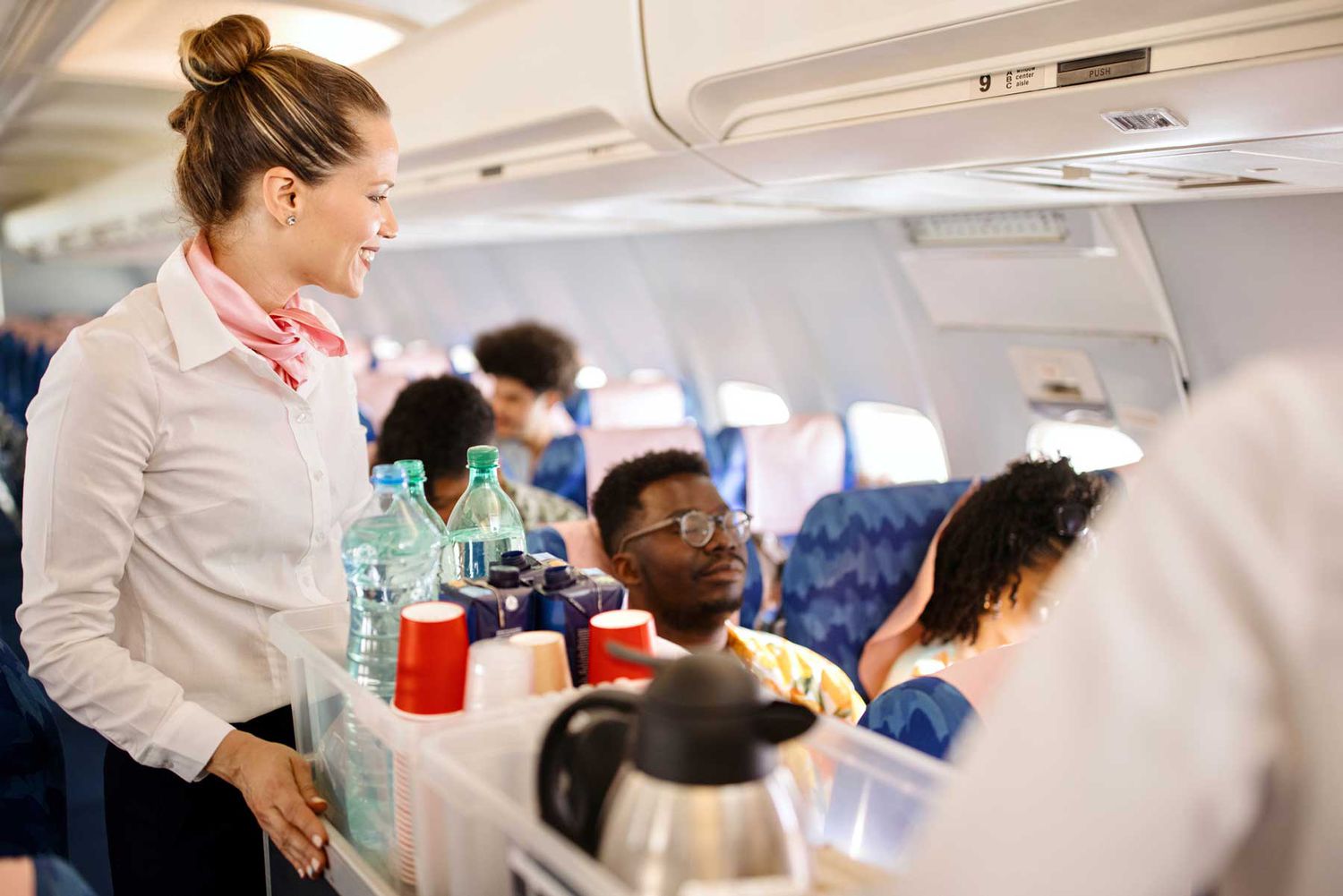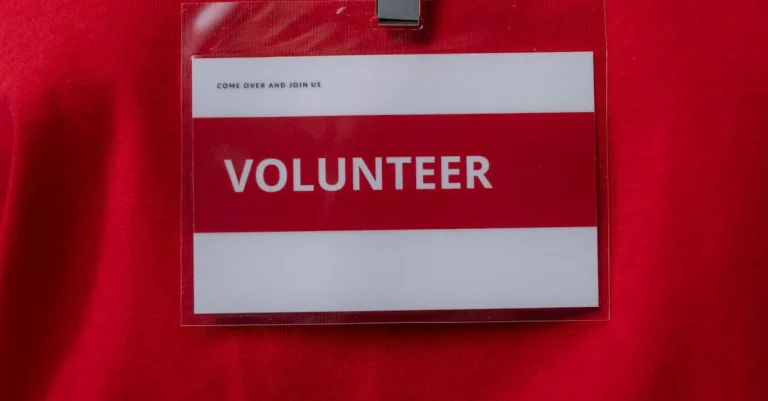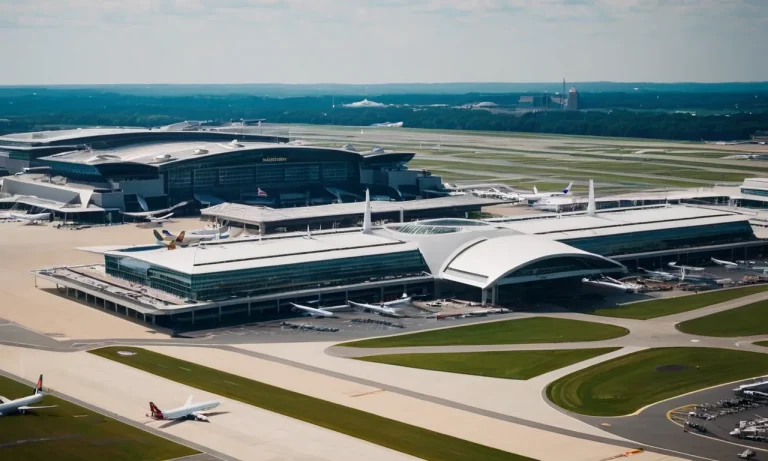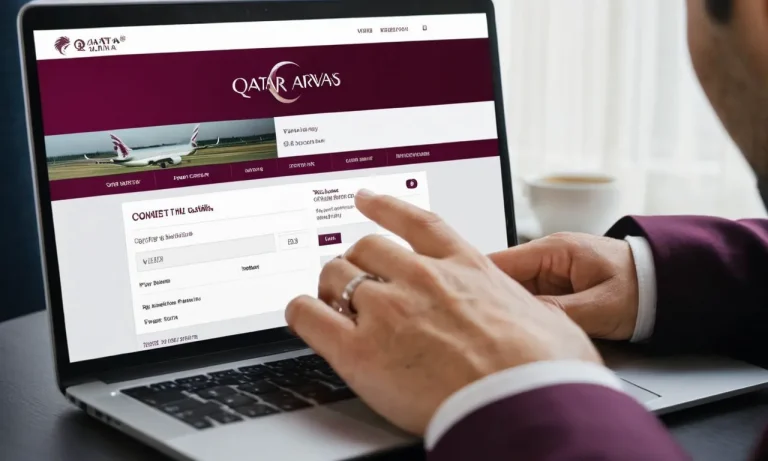Are you interested in becoming a flight attendant but wondering if the training is paid? This comprehensive guide will walk you through everything you need to know about the costs, compensation, and requirements for flight attendant training programs at major U.S. airlines.
If you’re short on time, here’s a quick answer: Most major airlines do provide paid training for new flight attendants. However, there are some costs that trainees will need to cover themselves.
Overview of Flight Attendant Training Programs
Flight attendant training is an essential part of becoming a flight attendant. It equips individuals with the necessary skills and knowledge to ensure the safety and comfort of passengers during flights.
Let’s take a closer look at some key aspects of flight attendant training programs.
Typical length and format of training
The length of flight attendant training programs can vary depending on the airline and the specific program. Typically, these training programs last anywhere from 4 to 8 weeks.
The training is usually divided into different modules, covering various aspects of the job such as safety procedures, emergency protocols, customer service, and inflight service.
During the training, aspiring flight attendants undergo both theoretical and practical sessions. They learn about aircraft systems, emergency equipment usage, first aid, and how to handle different situations that may arise during flights.
The training also includes role-playing exercises to simulate real-life scenarios, allowing trainees to practice their skills in a simulated cabin environment.
Locations where training is held
Flight attendant training is typically conducted at airline training centers or dedicated facilities. These training centers are equipped with mock-up aircraft cabins and training devices to provide a realistic learning experience.
The locations of these training centers can vary depending on the airline, but they are often located near major airports or airline hubs.
Some airlines may also provide accommodation for trainees during the duration of the training program. This allows trainees to focus solely on their training without the distractions of commuting or finding temporary housing.
Skills and knowledge covered during training
Flight attendant training covers a wide range of skills and knowledge necessary for the job. Trainees learn about safety procedures and protocols, including emergency evacuations, firefighting, and handling medical emergencies. They are also trained in first aid and CPR.
Customer service and communication skills are emphasized during the training. Flight attendants are the face of the airline and play a crucial role in ensuring a positive passenger experience.
They learn techniques for handling difficult passengers, providing exceptional service, and dealing with various customer requests.
Additionally, trainees are taught about in-flight service, including serving meals and beverages, conducting pre-flight and post-flight checks, and maintaining a clean and organized cabin environment.
It’s important to note that flight attendant training is a continuous process. After completing initial training, flight attendants undergo recurrent training to stay updated on new procedures, regulations, and industry best practices.
Costs of Training Borne by the Airline
Tuition/Fees
When it comes to flight attendant training, the costs are typically covered by the airline. This means that aspiring flight attendants do not have to worry about paying for their own tuition or fees.
The airline understands that training is an essential part of preparing individuals for the role and they invest in their employees by providing the necessary resources.
Travel and Lodging
In addition to covering the tuition and fees, airlines also often cover the expenses related to travel and lodging during the training period.
This means that aspiring flight attendants don’t have to worry about finding and paying for their own accommodation during the training program.
Airlines understand that the training location may be far from the candidate’s residence, and they take care of these logistical arrangements.
Meals and Incidentals
During the training period, airlines typically provide meals and incidentals to the trainees. This ensures that the trainees are well taken care of and can focus on their training without any additional financial burden.
The airlines understand that providing meals and incidentals is important for the overall well-being and productivity of the trainees.
Uniforms and Supplies
Flight attendants are required to wear uniforms while on duty, and the cost of these uniforms is generally borne by the airline.
Additionally, airlines also provide the necessary supplies such as safety equipment, manuals, and other materials that trainees may need during their training period.
This ensures that trainees have everything they need to successfully complete their training and start their career as flight attendants.
Pay During Training Period
While the exact pay structure may vary from airline to airline, many airlines do provide a form of compensation to trainees during the training period.
This may be in the form of a stipend or a reduced salary, but it ensures that trainees are not financially burdened during the training period.
It is important to note that the pay during the training period may be lower than the full salary of a qualified flight attendant, as trainees are still in the learning phase.
Costs Paid by the Trainee
When it comes to flight attendant training, there are several costs that trainees are typically responsible for.
These costs can vary depending on the airline and training program, but it’s important for prospective flight attendants to be prepared for the financial obligations that may arise.
Here are some of the costs that are typically paid by the trainee:
Drug tests
Prior to beginning flight attendant training, trainees are generally required to undergo a drug test. This is a standard procedure to ensure the safety and well-being of both the crew and passengers.
The cost of the drug test is usually covered by the trainee, and it’s important to note that a positive result may disqualify an individual from pursuing a career as a flight attendant.
Background checks
Background checks are another expense that trainees can expect to cover. Airlines typically conduct thorough background checks on all potential flight attendants to ensure they meet the necessary security requirements.
These checks typically include criminal history, employment verification, and credit checks. The cost of these background checks is typically borne by the trainee.
Medical exams
Medical exams are a crucial part of the flight attendant training process, as they ensure that trainees are physically fit to perform the duties required of them.
Trainees are generally responsible for covering the cost of these medical exams, which may include tests for vision, hearing, and overall health.
It’s important for trainees to budget for these expenses, as they can vary depending on the healthcare provider.
Passport and visa
If you’re considering a career as a flight attendant, it’s important to have a valid passport and, if necessary, a visa. These travel documents are typically not covered by the airline and are the responsibility of the trainee.
The costs associated with obtaining or renewing a passport and visa can vary, so it’s important to research the requirements and budget accordingly.
Transportation to training location
Once accepted into flight attendant training, trainees are responsible for their own transportation to the designated training location.
Whether it’s a short drive or a long-haul flight, the cost of getting to the training facility is typically not covered by the airline.
Trainees should factor in these transportation costs when considering the overall expenses of their training journey.
It’s important to keep in mind that while these costs may seem daunting, the investment in flight attendant training can lead to a rewarding and fulfilling career.
It’s always a good idea to research the specific costs associated with the airline you are interested in and plan accordingly.
Remember, the benefits and opportunities that come with becoming a flight attendant can far outweigh the initial financial commitment.

Requirements to Get Hired as a Flight Attendant
Minimum age
In order to become a flight attendant, one must meet certain requirements. The minimum age requirement is typically 18 or 21 years old, depending on the airline. This is to ensure that candidates have reached a certain level of maturity and responsibility.
Airlines want to ensure that their flight attendants can handle the demands of the job and effectively communicate with passengers.
Education and experience
While a high school diploma or equivalent is usually the minimum educational requirement, some airlines may prefer candidates with a college degree. Additionally, having prior experience in customer service or hospitality can be beneficial.
Airlines look for individuals who are customer-oriented, have excellent communication skills, and can handle difficult situations with professionalism and grace.
Language skills
Flight attendants are often required to interact with passengers from different countries and cultures. Therefore, having proficiency in multiple languages is highly valued.
Airlines commonly require fluency in English, but knowledge of other languages, such as Spanish, French, or Mandarin, can give candidates a competitive edge.
Ability to obtain passport and other documents
As flight attendants may be required to travel to different destinations, it is important that candidates have the ability to obtain a valid passport and any other necessary travel documents.
This includes being eligible to work in the countries the airline operates in and having a clean criminal record.
Physical fitness standards
Flight attendants need to have a certain level of physical fitness to perform their duties effectively. This includes being able to lift heavy objects, stand for long periods of time, and maneuver through tight spaces.
Airlines may have specific height and weight requirements to ensure that flight attendants can reach overhead compartments and fit comfortably in the aircraft’s seating.
Meeting these requirements is just the first step in becoming a flight attendant. Candidates will also need to go through a rigorous selection process, including interviews, medical examinations, and background checks.
It is important to research and familiarize oneself with the specific requirements of the airline(s) one is interested in applying to.
After Training: Probationary Period and Commitment
Once flight attendants complete their training, they enter a probationary period. During this time, they are closely monitored to ensure they can effectively perform their duties and adhere to company policies and procedures.
This period is crucial for both the airline and the new flight attendants, as it allows both parties to assess whether the individual is a good fit for the role.
Length of probationary period
The length of the probationary period can vary from airline to airline. It typically lasts between six months to one year.
During this time, flight attendants are expected to demonstrate their skills and knowledge acquired during training.
They are evaluated on their performance, customer service skills, ability to handle emergencies, and adherence to safety protocols.
Pay and benefits during probation
While flight attendants are on probation, they usually receive the same pay and benefits as their non-probationary counterparts. Airlines recognize the importance of compensating their employees fairly, even during this initial phase.
This ensures that flight attendants are motivated and feel valued for their work right from the start.
It’s worth noting that some airlines may have slight variations in pay and benefits during the probationary period. It’s important for aspiring flight attendants to research and understand the specific policies of the airline they are applying to.
Minimum time commitment required
Flight attendant positions typically require a minimum time commitment from employees. This commitment can range from a certain number of hours per month to a specific number of flights or trips.
These requirements ensure that airlines have a reliable and consistent workforce to meet the demands of their flight schedules.
During the probationary period, flight attendants are expected to meet these time commitments and fulfill their assigned duties on a regular basis. This demonstrates their dedication to the job and their ability to handle the responsibilities that come with being a flight attendant.
Did you know? According to the Bureau of Labor Statistics, the median annual wage for flight attendants was $67,000 in May 2022. This can vary depending on factors such as experience, airline size, and flight routes.
Conclusion
In summary, most major U.S. airlines do provide paid training to newly hired flight attendants. While there are some upfront costs that trainees must cover themselves, the airline will pay for tuition, travel, meals, uniforms and more during the training period.
After successfully completing training, new hires enter a probationary period where they are evaluated on the job.
The airline training is an investment made with the expectation that flight attendants will commit to working for the airline for a set period of time afterwards.






